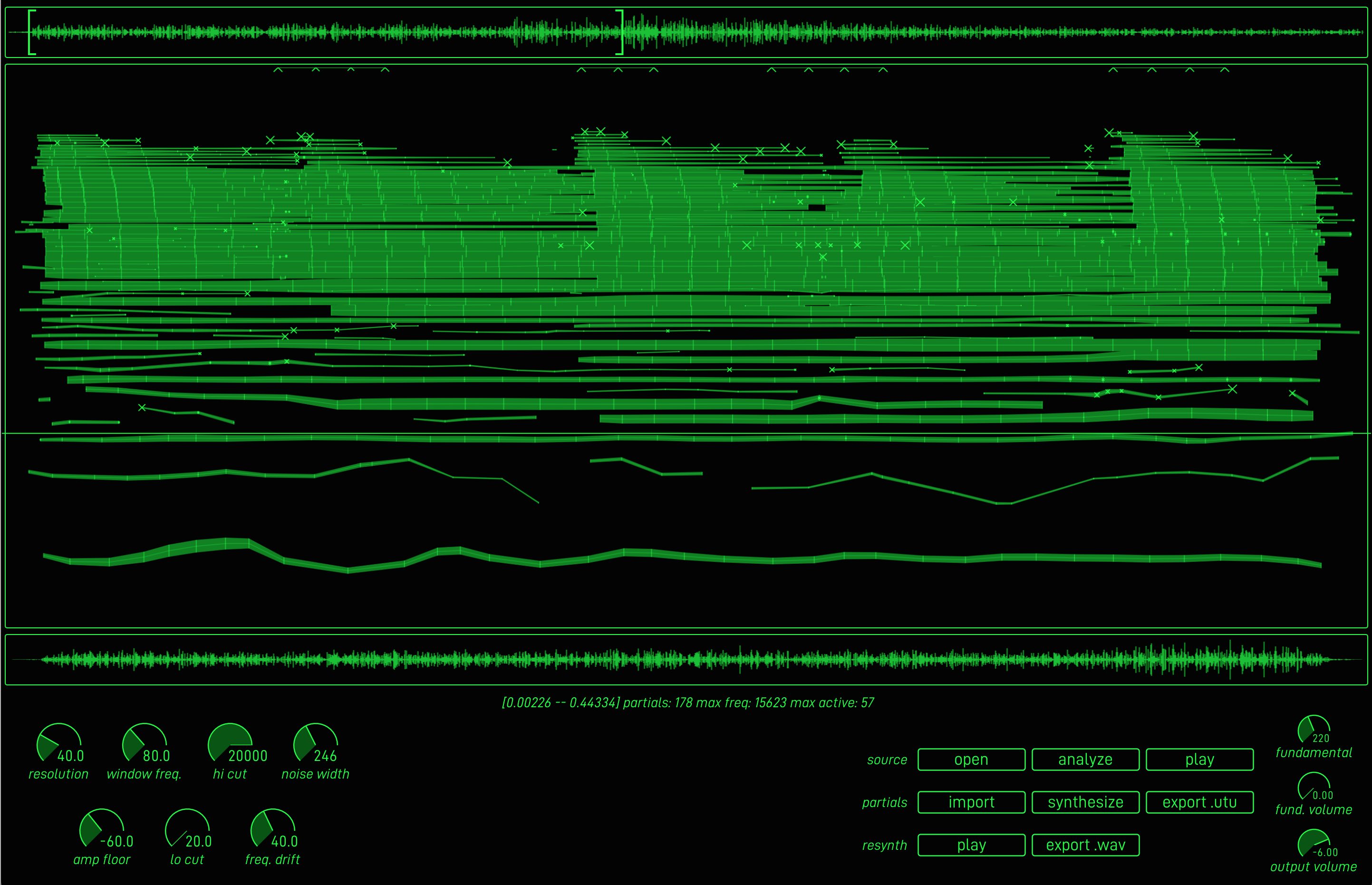About the sound
In Sumu, sampled sounds are represented as collections of up to 64 bandwidth-enhanced partials, each with a frequency, volume, and noisiness that can change over time. This representation of sound makes all kinds of creative changes possible, from natural-sounding time stretching to exotic timbral manipulations. Using the central multi-channel patcher, each partial in a sound can be manipulated independently in a way that feels more like playing than programming. Pick a few harmonics and frequency-modulate them? No problem. Delay each partial according to its frequency? Sure.
Sumu enables precise and careful changes in space and time, or wild chaotic ones. Take a sample, choose a few partials, and place them somewhere else in the sound field. Or explode everything and stir it into a whirlwind of doppler shifted chorus as each partial zooms around on its own path.
And then a stream comes burbling through, and as we listen, the individual droplets are gradually nudged into line to make a quantized rhythm. The pulses module in Sumu is a rich modulator for resynthesis, or a source of complex sounds all on its own. It offers smooth transitions between rhythm and noise, organic and synthetic.
As a balance to all of this very modern digital manipulation, there’s an analog-modeled filter based on the classic four-pole Moog ladder design. It can self-oscillate for big vintage sounds, or just round off those prickly edges.
Looks good, too
While the patcher keeps things simple on the surface, each patch cord has 64 independent channels in it. That’s a lot of data. So Sumu has different ways to visualize that data, including the space module, which presents a 3d view of each partial’s location, and a 64-channel scope with bar graph and horizontal wave modes.
There’s no visual fluff here: everything has a purpose. True, some of the modules have a lot of blinking lights and are fun to look at. But that’s a result of them being the best real-time visualizations of the sound data we could think of. For example, the space module shows you where each partial of each voice is positioned, 60 times a second (your DAW and computer permitting). What you see is what you hear.



